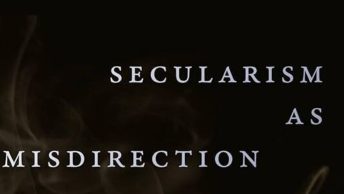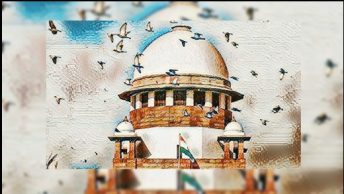NUJS Law Review is pleased to announce the release of the Companion Special Issue 13(3) of the NUJS Law Review on their website.
This Issue is of particular significance as the first piece in the Issue was published on September 6, to mark the second anniversary of the Supreme Court’s landmark judgment delivered in Navtej Johar v. Union of India. Since then, they have added more Articles and Notes to this Issue, all of which are available on their website.
This Issue stems from and acts as a companion to the previously published Navtej Singh Johar Special Issue in Vol. 12(3-4), 2019. Before this, the NUJS Law Review has had dedicated issues to the changing landscape in India after the Naz Foundation judgement was delivered in 2009 [Vol. 2(3)], and the jurisprudential evolution after the Suresh Kumar Koushal judgement delivered in 2013 [Vol.6 (4)].
This Issue contains articles from professionals, students, and scholars, who have contributed to navigating the changes in the years following the Navtej judgement, and charting the way forward. Following are the articles published in the Issue:
-
Editorial Note by Devashri Mishra & Aashesh Singh (Editors, NUJS Law Review)
- Foreword: Caste-ing Queer Identities by Ujithra Ponniah & Sowjanya Tamalapakula
Dr. Ponniah (a Wealth Inequality and Elite Studies fellow at Southern Centre for Inequality Studies (SCIS), University of Witwatersrand, Johannesburg) and Dr. Tamalapakula (a teacher at the School of Gender Studies at Tata Institute of Social Sciences (TISS), Hyderabad) in the Foreword discuss how the queer movement by emptying out caste is a space of upper-caste queer persons. As a result, its demands are limited to what our interlocutors referred to as “bland” politics of legalising marriage. The everyday struggles of safety and livelihood of Dalit queer and trans persons does not find a mention. They argue that the Dalit movement, while more accepting, also continues to be a masculine, alienating space through its inadequate engagement with sexuality and gender. They conclude by establishing that two years after the reading down of §377, the realisation of constitutional morality and democracy in same-sex intimacies and politics remains thwarted by the graded hierarchies of caste. -
Article: Re-Cast(e)ing Navtej Singh v. Union of India by Gee Imman Semmalar
Drawing from the Feminist Judgement Writing Project, Gee Imman Semmalar (a trans-activist, researcher and artist from Kerala, and a PhD Scholar in Law at the University of Kent, UK) re-writes the Navtej Johar judgement where arguments by the original petitioners, and an imagined petitioner, Ayyankali’s Makkal, an anti-caste trans and intersex rights group, are explored. An alternative judgement is presented keeping caste at its pivot, drawing on the myriad ways in which caste structures construct gender and sexuality norms in the social and legal regime in India, and how caste morality and interpretations of the right to privacy in a caste-based society are understood by adjudicators. Gee also uses this piece to write back to the exclusions faced by transgender persons across caste within the legal structures of the country in general and the text of the original judgment in particular. -
Note: Confinement at the Margins: Preliminary Notes on Transgender Prisons in India by Deekshitha Ganesan & Saumya Dadoo
Deekshitha Ganesan & Saumya Dadoo (Editors of the Detention Solidarity Network) inquire into the status of transgender persons in Indian prisons, in their Note titled ‘Confinement at the Margins: Preliminary Notes on Transgender Prisoners in India’. As transgender activists have argued, the verdict in Navtej has had little to no impact on the violent and gendered State apparatus that transgender persons are forced to negotiate everyday. Their paper demonstrates that while transgender persons are policed, criminalised, and made ‘hyper-visible’ in public spaces, they are ‘invisible’ in laws, rules, and practices that are framed for prison management. Further, it argues that centering the self-narratives of transgender prisoners is a necessary first step in understanding their experiences of prison and developing legal and policy responses. - Article: Trans Equality in India: Affirmation of the Right to Self-Determination of Gender by Jayna Kothari
Jayna Kothari (Senior Advocate at the Supreme Court of India and the Executive Director of CLPR) considers the verdicts in NALSA and Navtej, and the negligible impact these decisions have had to prevent deprivation of basic rights and legal recognition for the transgender community. She examines how the right to life also includes the right to bodily integrity which precludes the reliance on a medical model to decide gender identity, as is required in Indian law at present, and examines Indian and comparative jurisprudence on this issue. She argues to abolish a medical model of gender identity recognition, in favour of a re-affirmation of the right to self-determination of gender identity and in rejection of the claim of misuse and fraud which has been used frequently in India without support from any empirical data. In doing so, she suggests we move towards a transformative equality model which embraces principles of dignity, bodily integrity, self-determination and privacy. - Article: The L Word: Legal Discourses on Queer Women by Surabhi Shukla
Surabhi Shukla (PhD student in Law at Oxford University) examines issues faced by queer women in India through a legal lens in her Article. She identifies four issues for discussion – privacy, live-in relationships, allegations of lesbianism in matrimonial disputes, and the pressure to enter heterosexual marriages. She engages with the first two issues in depth, and lays the groundwork for scholars to follow up on the latter issues. She argues that the Navtej Johar case, by permitting a right to same-sex sexual relations between adults in private, failed to understand the very nature of the privacy concern of queer women. She further critically analyses live-in relationship cases between queer women before and after the Navtej judgment to find that a lack of respect for the autonomy of women continues to characterise the disposal of these cases. She concludes her article by providing legal and extra-legal solutions for addressing the problems identified. Given the law’s limited success in delivering freedom to queer women, she wonders if a narrow and measured engagement might be more profitable in the long run. - Article: The End of Criminality? The Synecdochic Symbolism of §377 by Aniruddha Dutta
Dr. Aniruddha Dutta (Associate Professor. Gender, Women’s and Sexuality Studies and Asian and Slavic Languages and Literatures, University of Iowa) contemplates the synecdochic symbolism of §377 of the Indian Penal Code, 1860. Dr. Dutta observes that the symbolic politics in casting §377 as an overarching symbol of LGBT discrimination allowed the anti-§377 movement to strategically subsume the forms of violence inflicted on queer and transgender people, which were only very tangentially related to the law. She argues that this appropriative mechanism facilitated the empowerment of the more elite amongst the LGBT, while offering only tentative protections, and sometimes even endangerment, to less privileged queer and transgender persons who still carry the stigma of criminality. - Article: Navtej: A Queer Rights Jurisprudential Revolution? by Gayathree Devi KT & Sameer Rashid Bhat
Gayathree Devi KT and Sameer Rashid Bhat are DPhil (Law) and DPhil (Public Policy) Candidates, University of Oxford. Their paper analyses how other courts – domestic and foreign – have reacted to Navtej in their queer rights jurisprudence in an attempt to answer whether it is truly the queer rights jurisprudential revolution it is made out to be. It appears to have, indeed, inspired a queer rights revolution within India, specifically through the recognition of the right of queer couples to cohabit. Abroad, although queer rights litigation has been inspired by Navtej, the will to employ its reasoning remains dubious. - Article: Legal Imagination and Social Reform: Navtej Johar Revisited by Saumya Uma & Samudyata Sreenath
In this paper, Dr. Saumya Uma (Associate Professor of Jindal Global Law School) & Samudyata Sreenath (Assistant Lecturer of Jindal Global Law School) question the tenability of the distinction between constitutional morality and societal morality drawn in the Navtej Johar judgment. They elaborate on how constitutional morality is seen as being progressive and liberating while societal morality is deemed to be restrictive and repressive. The authors have questioned this dichotomy to state that the two moralities are not as distinct as they seem to be. They have attempted to dismantle the divide created between the two to argue that societal morality is not devoid of justiciable principles, instead, it reinforces and strengthens constitutional morality. - Article: The Despised and Dishonoured: The Non-Human ‘Beast’ and the Non-Conforming ‘Khairati’ by Alok Hisarwala Gupta
Mr. Alok Hisarwala Gupta is a lawyer, activist and researcher working on LGBT and animal rights. In this paper, he examines cases of animal sexual assault perpetrated by men in order to raise genuine concern about the continued suffering of animals. He does so by acknowledging the gendered nature of such violence, observing that a trans-species solidarity is emerging among feminism, queer rights, and animal welfare, around the issue of animal sexual assault. Mr. Gupta addresses the inadequacy of §377 of the Indian Penal Code, 1860 in securing justice for animal victims. He invokes the Ambedkarite public conscience so that humans may take up the animal cause as well, in order to complete the unfinished legacy of the Supreme Court judgment delivered in Navtej. The paper will be a part of the reading list for a seminar on animal rights which Mr. Gupta will be delivering at NLSIU next semester. - Article: Uncloseting in Hindi Queer Cinema: One Law, Two Gay Male Protagonists by Pawan Singh
Dr. Pawan Singh is a Visiting Fellow at the Deakin University Australia India Institute. This article is situated at the intersection of media and cultural studies, postcolonial studies, gender and sexuality and human rights scholarship. He uses cinematic representations of same-sex desire and relationships made in two mainstream Hindi films (Aligarh and Shubh Mangal Zyada) to understand how the situation has unfolded after the decriminalisation of §377 not only in the courtroom but also in society, in cultural representation, expressions, and practices. He uses these films as indicators of legal change and social change at critical junctures in the battle towards decriminalisation of §377. Through this paper, Dr. Singh draws on media and cultural studies, queer theory, and legal studies to unpack how contemporary Hindi films mediate the relationship between law and society. He contributes to a timely, ongoing conversation on the post-decriminalisation project of societal acceptance of same-sex relations by the Indian society. - Article: Interrogating the Freedoms of Queer Liberation in India by Jason Keith Fernandes
Jason Keith Fernandes, a researcher at the Centre for Research in Anthropology, ISCTE–Lisbon University Institute, Lisbon, Portugal, in his Article discusses how the reception of the Supreme Court’s reading down of §377 should be more circumspect, since there is much in the decision that offers reasons for concern. Rather than making a rupture with the contemporary majoritarian political climate, he argues, the decision is, in fact, a continuation of a longer nationalist project aimed at consolidating the ideal citizen subject of the Indian nation-state. This article has been republished with permission from the Economic and Political Weekly, where a version of the article first appeared in Vol.55(1) on January 4, 2020.
They thank their external reviewers, members of the NUJS Law Review (2020-21), and the NUJS community for their support!
Additionally, their newsletter by the name of the NUJS Monthly Digest, which is curated by their Members will be sent to your inboxes on the 21st of every month. You can have a look at the latest September issue here, and sign up to receive future issues of the newsletter using this form.






Thanks for sharing. I read many of your blog posts, cool, your blog is very good.